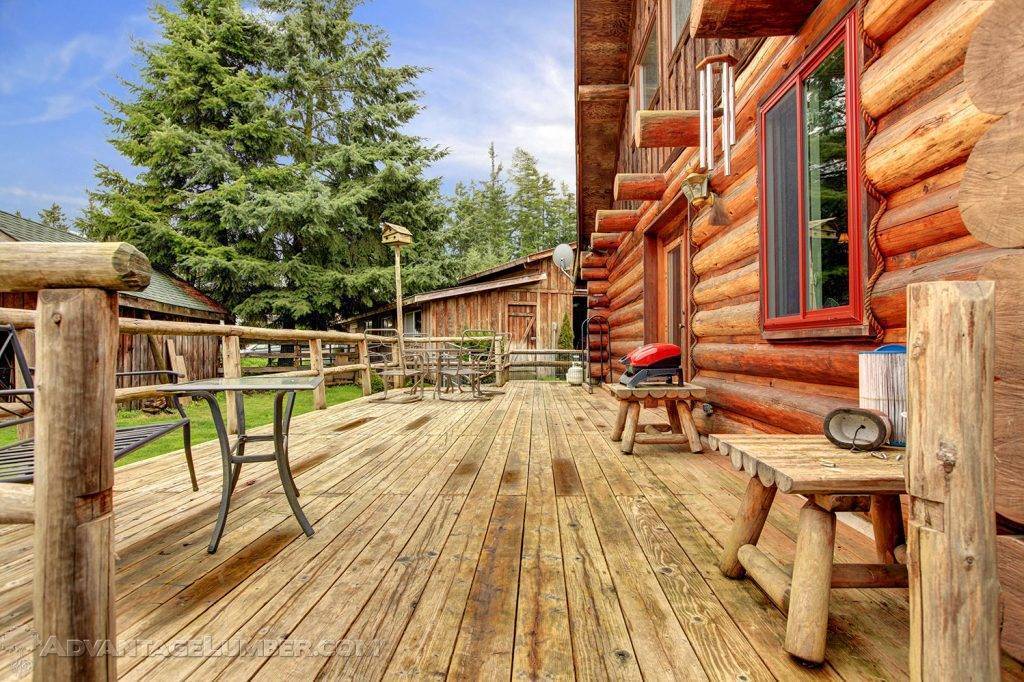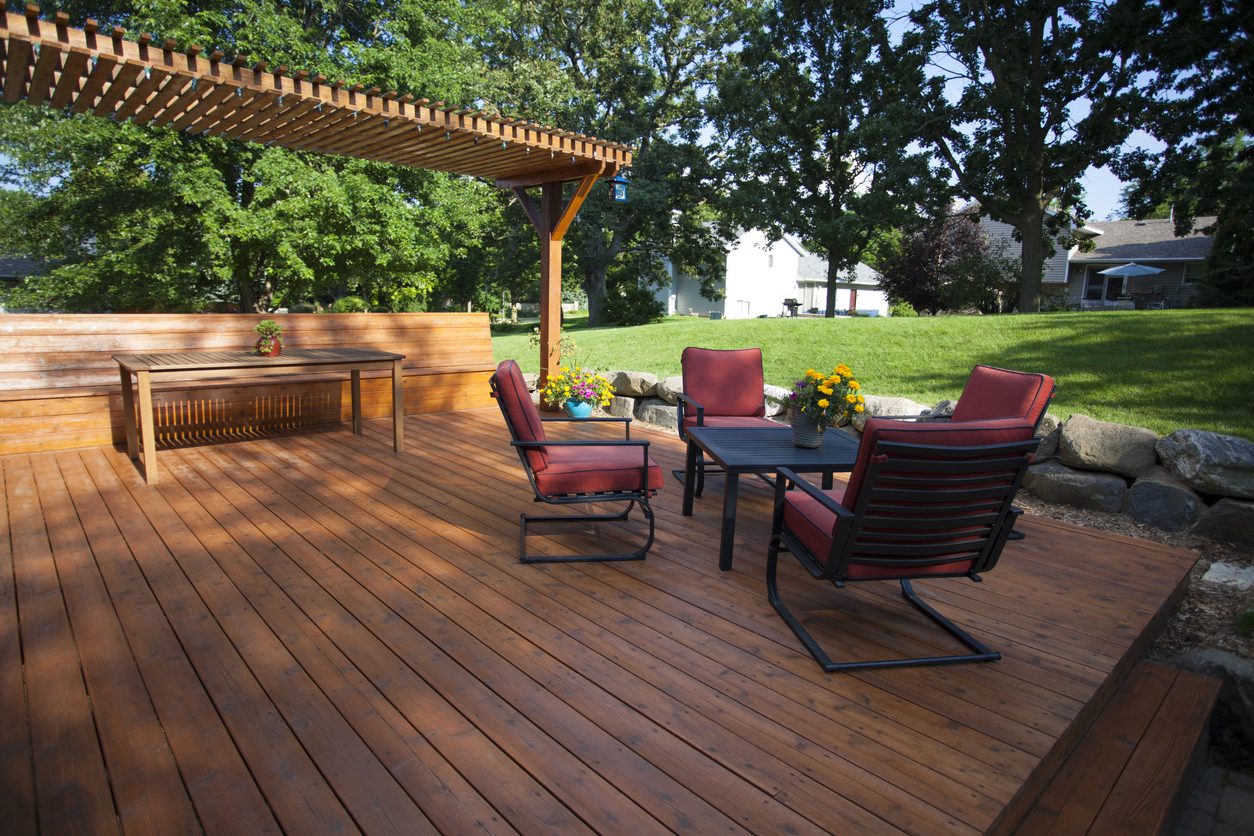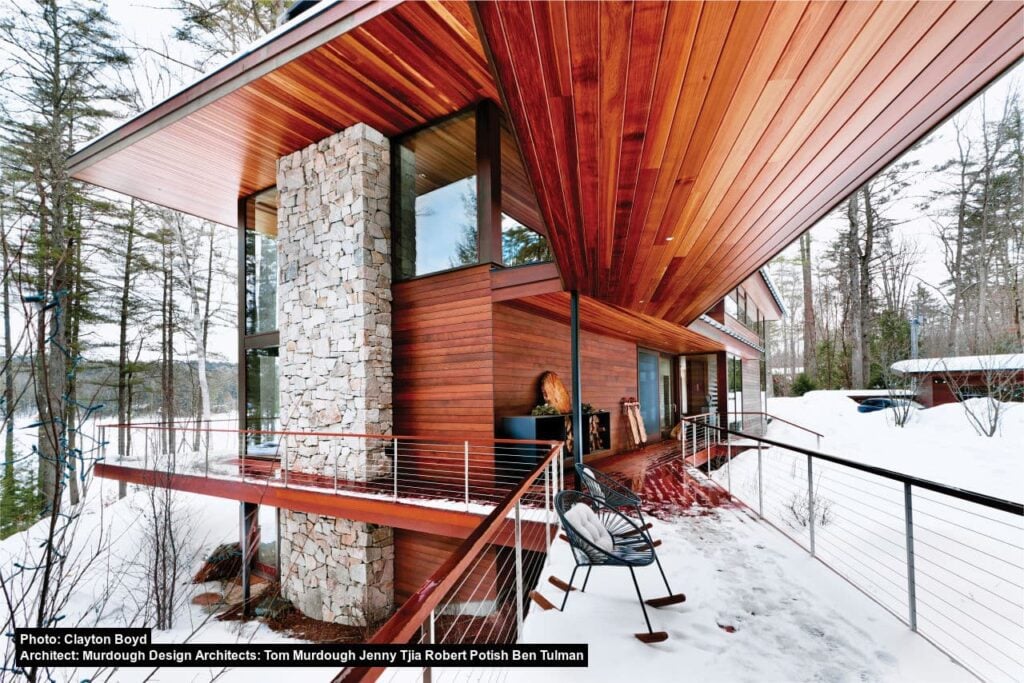When choosing materials for outdoor projects like decks, fences, or pergolas, two popular options often come up: cedar and pressure-treated wood.
Both have their strengths, but which is better? To answer this, we’ll compare their properties, dive into the history and evolution of pressure-treated wood, and explore why cedar—especially premium grades like clear vertical grain—often outshines its competitor in longevity and aesthetics.
Understanding Cedar and Pressure-Treated Wood
Cedar is a naturally durable softwood, prized for its rich color, pleasant aroma, and inherent resistance to rot, insects, and weathering. Western red cedar, in particular, is a go-to for outdoor applications due to its natural oils and tannins, which act as preservatives.
Cedar comes in various grades, from knotty (more rustic, with visible knots) to premium options like clear vertical grain, which is knot-free, has a uniform grain, and is considered top-tier for its stability and beauty.
Pressure-treated wood, typically Southern Yellow Pine or Douglas Fir, is chemically treated to resist rot, insects, and fungal decay. The wood is placed in a pressure chamber, where preservatives are forced deep into its fibers.
This treatment extends the life of otherwise less durable woods, making it a cost-effective choice for outdoor use. However, the effectiveness and safety of pressure-treated wood depend on the chemicals used, which have changed significantly over time.
The History of Pressure-Treated Wood

Pressure-treated wood has been a staple in construction since the early 20th century. The process was developed to make fast-growing, inexpensive softwoods like southern yellow pine viable for outdoor use. By the 1930s, creosote and chromated copper arsenate (CCA) became common preservatives. CCA, introduced in the 1940s, was particularly effective because it bonded tightly to wood fibers, providing decades of protection against decay and insects.
However, CCA contained arsenic, a toxic element that raised health concerns, especially for structures like playgrounds or decks where people (and children) had direct contact. Studies in the 1990s linked arsenic exposure to cancer risks, prompting scrutiny. In 2003, the U.S. Environmental Protection Agency (EPA) and manufacturers phased out CCA for residential use, though it’s still permitted for industrial applications like utility poles.
The Shift to Arsenic-Free Formulas
Post-2003, the industry pivoted to arsenic-free alternatives, primarily alkaline copper quaternary (ACQ) and copper azole (CA). These formulas rely on copper as the primary preservative, with quaternary compounds or azole additives to enhance protection against fungi and insects. Another option, micronized copper azole (MCA), uses finely ground copper particles for deeper penetration and less leaching.
While these newer treatments are safer for humans and the environment, they come with trade-offs:
- Reduced Longevity: CCA-treated wood could last 30–40 years in ideal conditions. ACQ and CA-treated wood, while still durable, typically lasts 10-15 years, depending on climate, maintenance, and exposure. The copper-based formulas are less effective against certain fungi and may leach more readily in wet environments. In extreme cases we’ve seen homeowners needing to replace their pressure treated wood after 5 years.
- Corrosion Issues: ACQ and CA are more corrosive to metal fasteners than CCA, requiring galvanized or stainless steel hardware to prevent rust and structural failure.
- Environmental Impact: Although safer, copper-based treatments can still leach into soil, potentially affecting nearby plants or water sources.
These changes mean that modern pressure-treated wood, while still a solid choice, doesn’t match the longevity of its arsenic-based predecessor—or, in many cases, naturally durable cedar.
Why Cedar Often Lasts Longer
Cedar’s natural preservatives give it a significant edge in longevity, especially when compared to post-2003 pressure-treated wood. Here’s why:
- Inherent Durability: Cedar’s oils and tannins resist rot and insects without chemical additives. Western red cedar can last 20–30 years or more with proper maintenance, often outlasting ACQ- or CA-treated pine in harsh climates.
- Stability: Cedar is less prone to warping, cracking, or splitting than pressure-treated pine, which can shrink as it dries post-treatment.
- Maintenance: Cedar responds well to stains or sealants, which enhance its lifespan. Pressure-treated wood requires similar maintenance, but its chemical treatment can fade over time, leaving it vulnerable.
- Aesthetic Aging: Cedar weathers to a silver-gray patina, which many find attractive. Pressure-treated wood often turns a dull gray or brown and may show uneven weathering if not sealed.
The Premium Advantage of Cedar Grades
Cedar’s versatility is amplified by its range of grades, offering options that pressure-treated wood simply can’t match. Clear vertical grain cedar is the cream of the crop. This premium grade is:
- Knot-Free: Unlike knotty cedar or pressure-treated wood, which often has knots that weaken the structure or detract from appearance.
- Uniform Grain: Vertical grain (where the growth rings run parallel to the board’s edge) ensures superior stability, reducing cupping or twisting.
- Aesthetic Excellence: Its smooth, consistent surface is ideal for high-end projects like furniture, siding, or exposed beams.
You won’t find an equivalent in pressure-treated wood, which is typically available in standard grades focused on utility rather than beauty. Clear vertical grain cedar is pricier, but its durability and elegance justify the cost for projects where appearance matters.
Other Considerations
- Cost: Pressure-treated wood is generally cheaper upfront, making it appealing for large projects. Cedar, especially premium grades, has a higher initial cost but may save money over time due to its longevity and lower maintenance needs.
- Sustainability: Cedar is a renewable resource, but harvesting must be managed responsibly. Pressure-treated wood’s chemical treatments raise environmental concerns, though newer formulas are less harmful.
- Health and Safety: Modern pressure-treated wood is safe for most residential uses, but care should be taken when cutting or sanding to avoid inhaling dust. Cedar poses no less risks since all sawdust can be irritating and some people are more susceptible to wood dust allergies.
- Applications: Pressure-treated wood is ideal for ground-contact uses like posts or joists. Cedar shines in visible applications like decking, siding, or furniture, where its beauty and natural resistance stand out.
Conclusion: Cedar Takes the Crown
While pressure-treated wood remains a practical, budget-friendly option, cedar—particularly high-grade options like clear vertical grain—emerges as the superior choice for most outdoor projects. The phase-out of arsenic-based CCA in 2003 reduced the longevity of pressure-treated wood, leaving it less durable than cedar’s natural resilience. Cedar’s ability to last 20–30 years, combined with its aesthetic appeal and premium grade options, makes it the better long-term investment for homeowners who value beauty and durability.
If you’re building a deck or fence that you want to enjoy for decades with less upkeep, cedar is the way to go. For budget-conscious projects or hidden structural elements, pressure-treated wood still has its place. Ultimately, the choice depends on your priorities—cost, appearance, or lifespan—but cedar’s natural edge is hard to beat.
Note: Always check local building codes and consult with professionals for specific project requirements.

